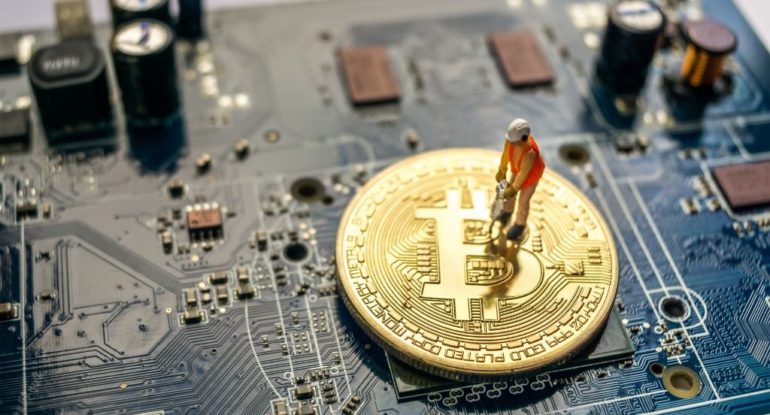Your Ultimate Guide To Bitcoin And Crypto Mining Pools

Whether to mine independently or to join a “pool” is one of the first decisions potential cryptocurrency miners must make. There are many justifications for and against mining pools. What you should know is as follows.
It can be beneficial to conceive of a bitcoin mining pool’s merits and cons as identical to those of a lottery syndicate while determining whether or not to join one. Even if a bitcoin mining pool has a considerably higher chance of cracking a block and earning the reward, the pool members will all share in the prize. Going alone means you won’t have to split the payout, but your chances of winning are much lower.
It is significant to remember that a bitcoin mining pool shouldn’t use more than 51% of the network’s hashing power. Theoretically, the entire bitcoin network could be destroyed if a single group came to hold more processing power than 50%. Therefore, even if each payout is little relative to the total block reward, joining a mining pool generates a consistent stream of money (which currently stands at 6.25 BTC).
Why participate in a bitcoin mining pool?
Another consideration while contemplating solo mining is difficulty level. At this point, it is so high that it is almost impossible for lone miners to turn a profit. Unless, of course, you have a garage full of ASICs frozen in the Arctic. Joining a bitcoin mining pool is a terrific way to start and earn a small amount of money quickly. Pools do serve as a motivator for artisanal miners to continue working.
“Merged mining” is one type of mining that bitcoin makes possible. Here, blocks for other currencies using the same proof-of-work mechanism as Bitcoin can be utilized (for example, namecoin, and devcoin). Merged mining can be compared to putting the same numbers into multiple lotteries, which is a helpful analogy.
Inexperienced miners with less-than-powerful hardware should consider altcoins rather than bitcoin, particularly those based on the scrypt algorithm rather than SHA256. This is because the complexity of bitcoin calculations is simply too great for the CPUs used in standard PCs.
Things to think about before joining a bitcoin mining pool
Before choosing one to join, you should consider how each mining pool distributes its payments and what fees (if any) it deducts. Deductions typically vary from 1% to 10%. Some pools, however, make no deductions at all. There are numerous ways for pools to share payments. Most of them focus on how many “shares” a miner has “proven” to the pool as “proof of labour.”
The idea of shares is difficult to understand. Remember these two things:
- In mining, cryptographic puzzles are solved.
- Mining is difficult.
The answer has a matching difficulty level when a miner “solves a block.” Consider it a gauge of excellence. If the miner’s solution has a higher difficulty rating than that of the entire currency, it is added to the blockchain for that currency, and coins are awarded.
A mining pool also establishes a difficulty level that ranges from 1 to the currency’s difficulty level. The block is referred to as a “share” if a miner sends back a block with a difficulty score that falls between the pool’s and the currency’s difficulty level. These share blocks have no purpose whatsoever, but they are recorded as evidence of efforts to demonstrate that miners are making an effort to solve blocks. Additionally, they show how much processing power they donate to the pool; more shares are produced with better gear.
Also Read: Cryptocurrency Mining Pool – Important Points To Learn
The “pay per share” (PPS) model is the simplest way to divide payments. The rate paid per share is constrained by variations such as the equated shared maximum pay per share (ESMPPS) or the shared maximum pay per share (SMPPS). Depending on how recently miners have submitted shares, pools may or may not give payments a higher priority (RSMPPS). The bitcoin wiki has other instances.
Mining swarms outside of bitcoin
Besides bitcoin, there are several pool choices accessible for mining. Whether you’re interested in mining zcash, litecoin, or ether, you can simply locate lists of mining pools online. Popular examples include:
- BTC.com
- Swamp Pool
- AntPool
Joining a mining pool
It’s time to get started now that you’ve chosen which currency to mine and which pool to work for. You must register for an account on the pool’s website, just like any other web service. You must create a “worker” once you have an account. You can create many workers for each piece of mining equipment you want to utilize. Most pools have the default settings set so that users are given a number as their name and the password “x,” but you can modify these to anything you choose.




























































